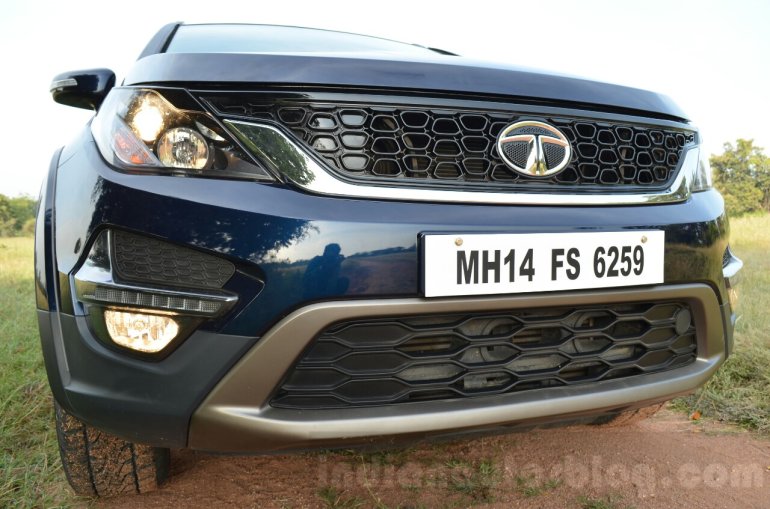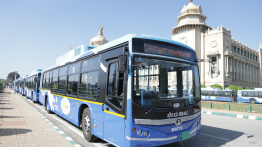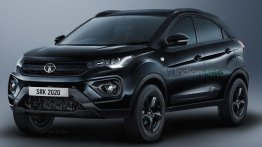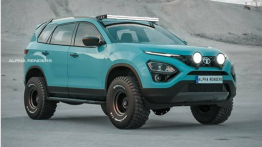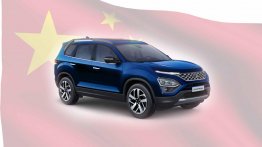The Tata Hexa first made its debut as a pre-production concept at the 2015 Geneva Motor Show. It took us a good two walk-arounds of the SUV to realize the Hexa is actually based on the Aria. However, Tata Motors would like if you did not associate any aspect of the Hexa to the Aria, and claims that the Hexa is an 'all-new' vehicle. Just how good is it?
Exterior:
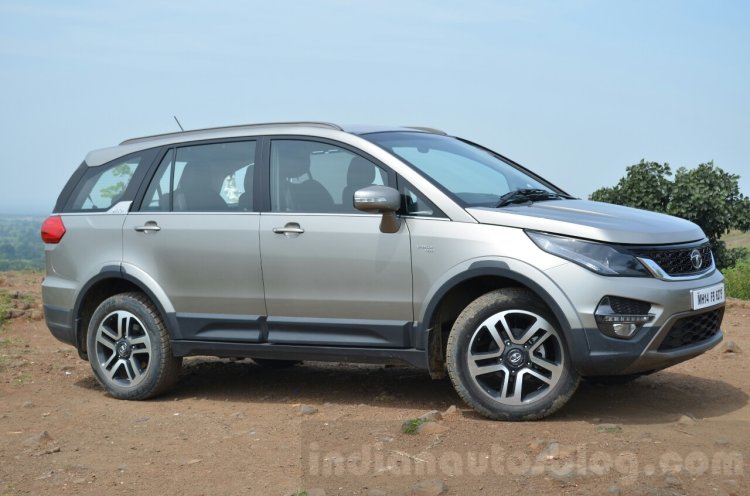
The Tata Hexa measures 4,788 mm in length, 1,903 mm in width, 1,791 mm in height, 2,850 mm in wheelbase and 200 mm in ground clearance. It comes shod with 19-inch 235/55 alloy wheels. On the design front, Tata Motors have retained the door skins and windows of the Aria, which is the only giveaway in an otherwise attractive design.
While design is indeed subjective, here's a summary of the good and bad of the Hexa's exterior -
The Good:
- The Hexa looks good, but it is not exactly a head turner: There is nothing fresh or ground-breaking on the design front. We also think the design language is not as expressive as that of the Tiago or the future Nexon compact SUV. But in the overall context, the Hexa is a handsome vehicle.
- Shut-lines and panel gaps are very well contained. There is consistency throughout the exterior of the Hexa which will certainly go appreciated by buyers.
- Accessory availability: Tata Motors showcased a wide range of accessories for the Hexa, and they all add to the 'outdoor lifestyle' appeal of the SUV. Fact that you can customize even the small chrome outlines of the taillights should give buyers a feel of exclusivity.
- According to Tata Motors, the Hexa gets a 'first in India' patented curved LED taillights. The taillight element bends through the D-Pillar and looks quite attractive at night.
- The Hexa features a water wading depth of 450 mm according to Tata Motors. For reference, the Land Rover Discovery Sport (the Hexa is expected to cost a third of the Disco Sport) can handle a maximum of 600 mm.
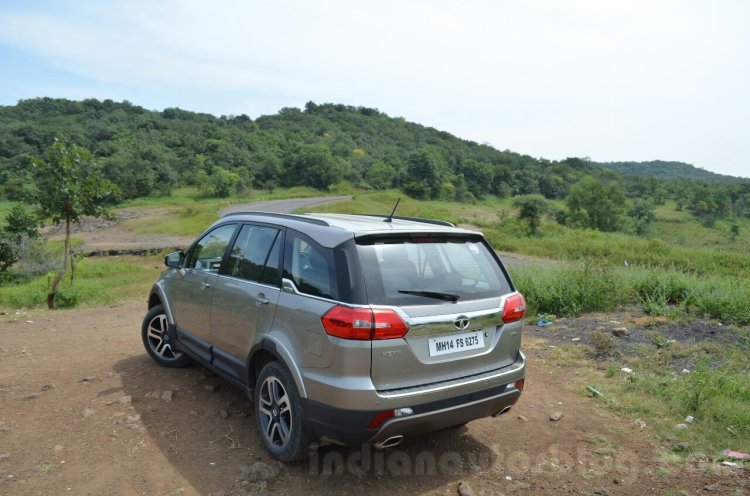
The Bad:
- Smart entry-type keyless system is missed. You get the regular foldable keyfob, which we think should have been upgraded considering the positioning of the Hexa.
- Standard chrome garnish on the bootlid looks a bit gaudy. Thankfully, accessories come to the rescue.
- Doors and door handles lack a solid feel. The door handles especially appear a tad flimsy.
- Bootlid could do with a bit more hydraulic assistance while closing. Loading lip could have been a bit lower too.
Interior:
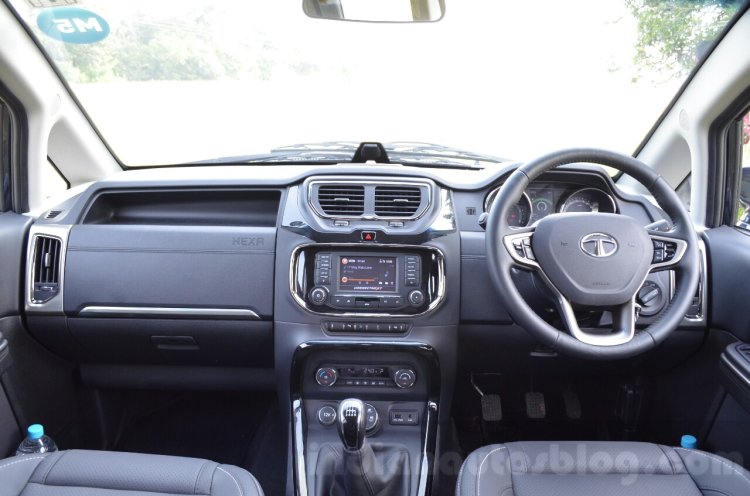
According to Tata Motors' design head, Mr. Pratap Bose, the Hexa, as the name suggests, was conceptualized to be a comfortable six-seater SUV, however, Tata will offer a seven-seat variant with a conventional second row bench. The six-seater gets captains chairs for the second row. Claims made by the company include the 'most spacious' third row, and 'most comfortable' seats in this segment.
We sampled the Hexa XT 4x4 MT first with a 7-seat arrangement. The first thing you realize when you step in is that it does take a bit of effort to climb into the Hexa, courtesy of its 200 mm ground clearance. However, we're sure a section of buyers will favor this, associating it with a typical SUV feel.
The Hexa's dashboard has a few elements that remind you of of the deceased Aria: The vertical AC vents on either side, and the design of the switches for the headlights, window controls and wing mirrors to name a few. However, aside from that, the Hexa's interior looks visually appealing and inviting.

Coming to the specifics, the driver's seat is average on thigh support, but pretty good on back and lumbar support. The seats of the Hexa are supplied by Lear Corporation, who also supply for Mercedes-Benz. Even the top-end variant of the Hexa gets only manual adjustment for the seat (the XUV500 offers electrical adjustment), and the adjustment levers (seat height, seat back, lumbar, rear seat tumble) are made of rough plastics, a bit of a mood kill in an otherwise decent cabin.
The overall quality of materials, and fit-and-finish inside the Hexa is good when you compare it to the XUV500 and the erstwhile Aria. However, the Toyota Innova Crysta (which Tata Motors acknowledges is a rival to the Hexa) is a few steps ahead on the quality front.
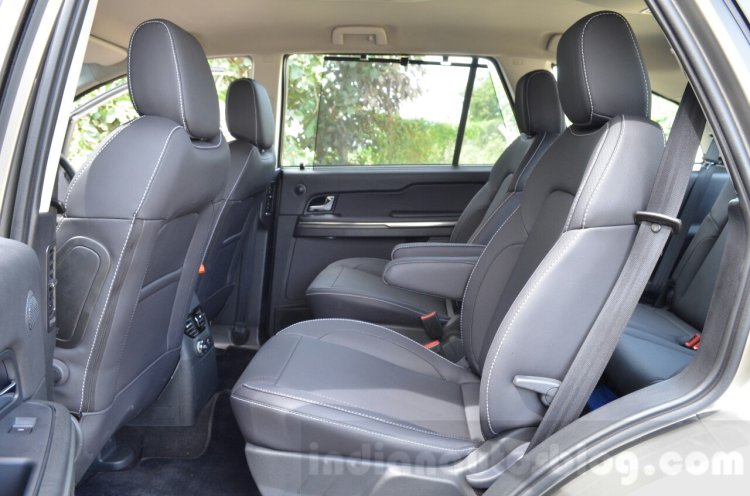
On the conventional bench, thigh room and back support is more than adequate to feel comfortable, and leg-room, needless to say, is aplenty to stretch out even. However, the six-seat variant with captain's chairs feels supremely comfortable: The amount of thigh support makes you want to just relax in these seats, and Tata has gone the extra mile to provide lumbar adjustment for these seats as well.
What further make the Hexa an excellent chauffeur-driven vehicle are the central AC vents, the B-Pillar mounted AC vents, the 3-step fan-speed adjustment, a USB charging port and window blinds. Further, with Tata Motors' apps for your smartphone, you can also control the infotainment system while seated anywhere inside the Hexa.
Moving to the third row is where things turn a bit sour. On the seven-seat variant with a conventional bench, Tata has opted for a two-step folding mechanism for the second row, where the new Innova comes with a much simple single-step mechanism. Further, the chords provided to fold the rear seat take considerable effort to operate, and the seat itself is very hefty to fold and tumble, to gain access to the third row. It is easier accessing the third row on the six-seat variant, but pushing the captain's chair takes a bit of effort nevertheless.
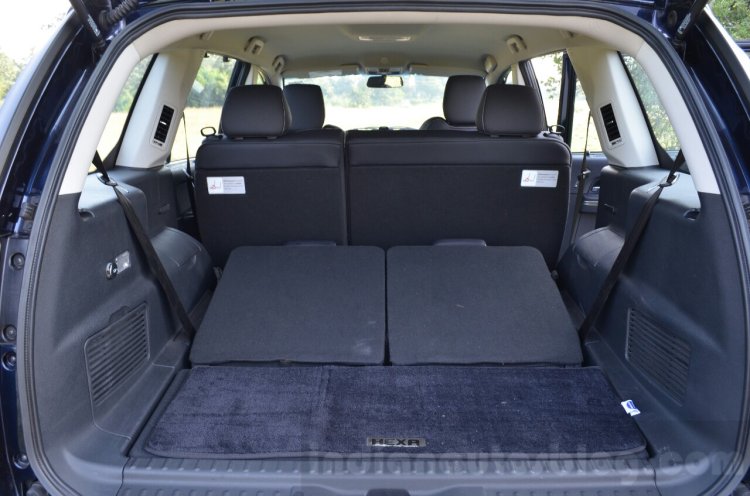
While the second row seats slide fore-and-aft for additional legroom for third row passengers, we're of the opinion that adults will find it a tad uncomfortable; not to sound clichéd, but we think these are best used by children only, or completely folded for the 671 liters of luggage space (with the third row in place, the Hexa offers 128 liters of luggage space)
The Good:
- You won't complain about the space on offer (first and second rows), ever.
- 10-speaker JBL sound system is worthy of the hype. Sounds very good!
- Excellent all-around visibility.

The Bad:
- On the manual variant, there is no dead clutch. In-fact, the footwell of the manual variant can be considered as ergonomically flawed in modern day standards, as there is absolutely no place to rest one's left foot - the center console protrudes in a manner not allowing you to do so.
- On the manual variant, the gearlever is set closer to the passenger than the driver. As a result, you're nearly reaching out to your passenger's leg to shift into first/second gears.
- On the go, the gearlever (MT) has a bit of vibrations. Appears more pronounced than you get on a XUV500. The Innova's gearlever in comparison is nearly vibration-free.
- Telescopic steering adjustment unavailable even on the top-end variant. Much needed as the steering wheel's diameter is larger than that of the Zest's/Tiago's, and requires more effort at parking speeds.
- 5-inch touchscreen appears a tad small in the overall context of the Hexa's size. Appears to be a resistive-type touchscreen whereas other manufacturers are offering a more modern capacitive unit.
- To use the navigation feature, your smartphone needs to be connected via USB. However, there is no provision on the center console/tunnel to hold your phone: You end up using a cupholder.
While it appears that there are more negatives than positives, we feel Tata Motors could have easily addressed the above points in the production Hexa.
Engine and Gearbox:

The Tata Hexa is powered by the 2.2-liter VariCOR four-cylinder diesel engine capable of 156 PS at 4,000 rpm and 400 Nm of torque between 1,700-2,700 rpm. Available gearbox options include a 6-speed manual or 6-speed automatic. The manual variant gets a Super Drive Mode and 4WD capability with torque-on-demand, whereas the automatic variant will remain 2WD and will come sans the Super Drive Controller.
The manual variant (Tata Hexa XT 4x4 MT) is what we sampled first. The Hexa starts up to a judder, but settles into a relatively smooth idle. Yes, you can hear the engine inside the cabin at idle, but overall noise levels are pretty decent. The Hexa MT gets a self-adjusting clutch (Tata claims it will have uniform effort throughout its life), with a relatively long travel which certainly needs a bit of getting used to.
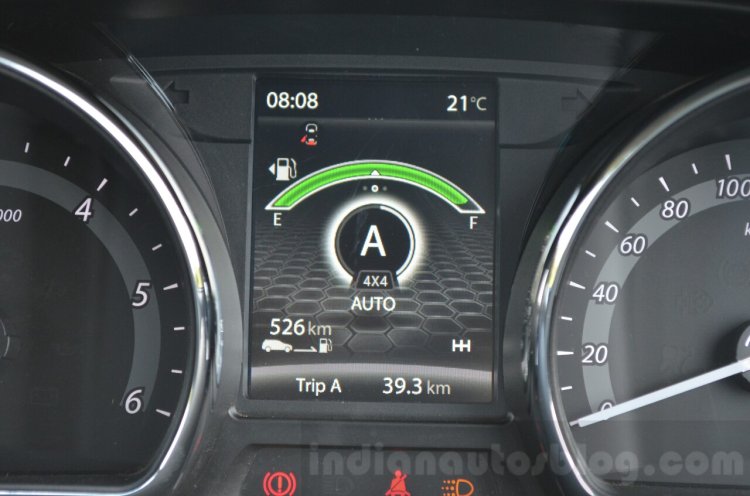
The 6-speed gearbox is billed as an all-new gearbox with triple synchromesh for the first and second gears, and double synchromesh for the rest of the gears. The gearlever was our least favorite aspect of the Hexa: The throws are pretty long, and as mentioned earlier, first and second gears involve a lot of reaching out to do. Also, Reverse is positioned at far-right bottom, and does not get a 'ring' that you can pull up, or push down, to access. As a result, on the move, it is very much possible to try and engage Reverse (the gear does not engage fully, but the reverse camera turns on, and you can hear the gearbox protesting) instead of 6th gear. The Honda City diesel which has the same layout has a fail safe mechanism: Slotting the gearlever far-right bottom engages only 6th gear on the move, and Reverse when the vehicle is stationary. Aside from these points, vibrations on the gearlever are pronounced.
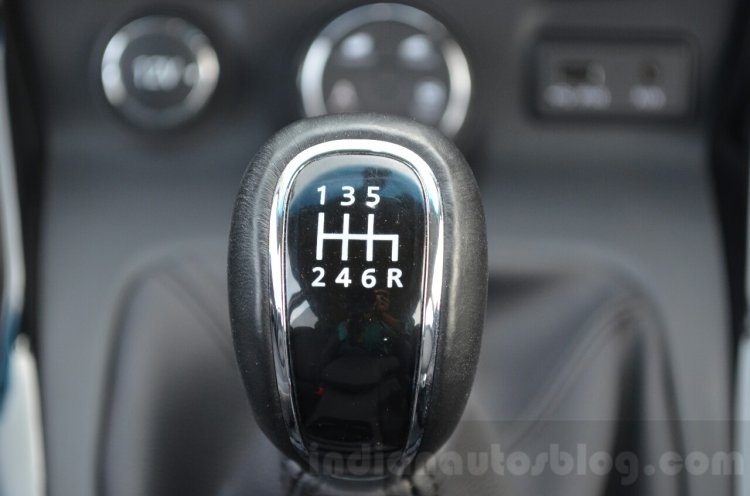
On the move, the Hexa proves that it develops its power in a linear fashion. Off boost and under 1,750 rpm, the SUV feels very much drivable and does not ask you to downshift. There is a spike in power from 1,750 rpm all the way to 4,000 rpm, though the Hexa does not shoot forward in warp speed, it builds speed gradually. Comparing it to the XUV500, which has only 330 Nm of torque, the Mahindra builds up speed a lot more quickly in the mid-range, but feels bogged down in the lower end of the powerband. The Hexa is not as quick as the XUV500, but feels consistent throughout its powerband.
A downside to the Hexa's linear power delivery is that on single-lane highways, you need a bit of planning and a lot of room for overtaking maneuvers. Getting back to a triple-digit speed also takes a bit of time on the Hexa MT. Buyers expecting the Hexa to be 'punchy', given its 400 Nm torque, will be in for a bit of disappointment.
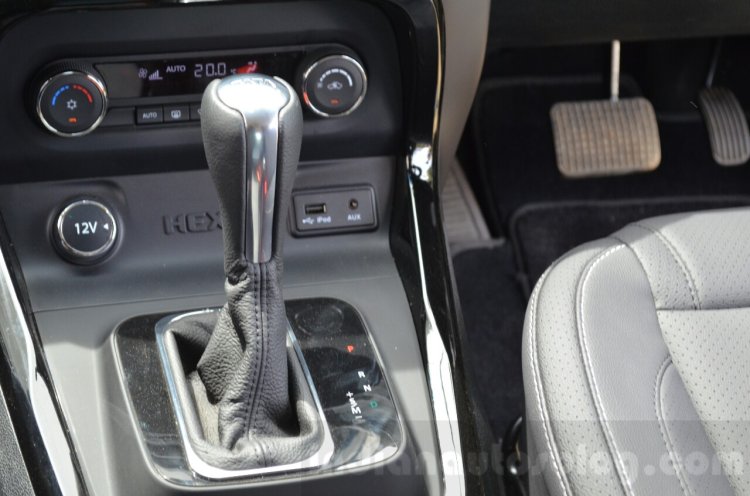
The Hexa AT (Hexa XTA 4x2 AT) which we sampled next was very contrasting to the manual variant in that it feels leaps-and-bounds better engineered and much nicer to drive. Slot the solidly-built AT lever in drive, and with the accelerator pedal pressed just half way, the Hexa builds up speed rather quickly, and the gearchanges are super smooth. This 6-speed automatic unit, made by Punch Powerglide of France, beautifully complements the 2.2-liter VariCOR engine, and masks the SUV's 2+ tonne bulk in a manner we're usually used to seeing only on luxury vehicles.
As with a conventional torque-converter, downshifts are a bit slow and a bit jerky, but for the price equation, completely justifiable. Not only does the Hexa AT perform wonderfully in urban and highway conditions, it also does a neat job of tackling hilly terrain. Slot the gearlever in the Tip-Tronic mode and the 'Sport' mode automatically engages which holds on to a gear for a longer period of time. Additionally, when you floor the accelerator in this mode, the Hexa engages what Tata Motors calls as 'Race Sport' mode, which keeps the engine spinning between 3,000-4,000 rpm.
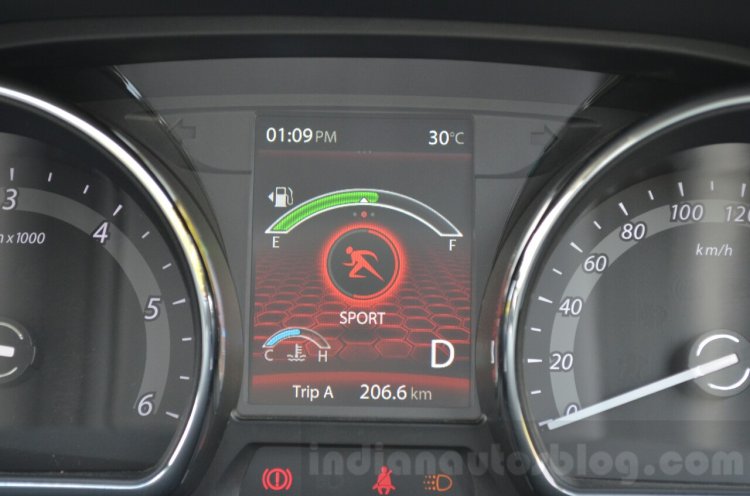
As a result, downshifts automatically take place with considerable enthusiasm, and upshifts do not take place until after 4,000 rpm. The gearbox can also be used in the manual mode (tip-tronic mode). Another thing we noticed in the Hexa AT is that it is more eager to hold higher triple digit speeds (140-160 km/h) than the manual variant.
Does the Super Drive Mode actually work in real conditions?
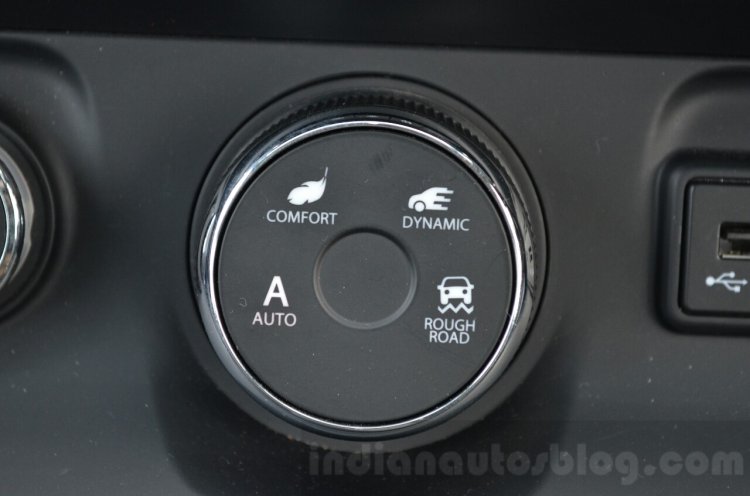
The Super Drive Mode (available only on the Hexa MT) allows the driver to choose between four modes - Rough Road (4WD), Comfort (2WD), Dynamic (2WD) and Auto (4WD with Torque-on-Demand). At the end of the day, it feels like a feature we wouldn't particularly miss. It only alters the ESP characteristics of the Hexa, and switches off/on the AWD system depending on the mode chosen. We didn't think the Super Drive Mode is worth the hype, rather an On/Off switch for the ESP and a dial to toggle between 2WD/4WD/Auto would have made things much simpler.
How does the Hexa perform Off-road?
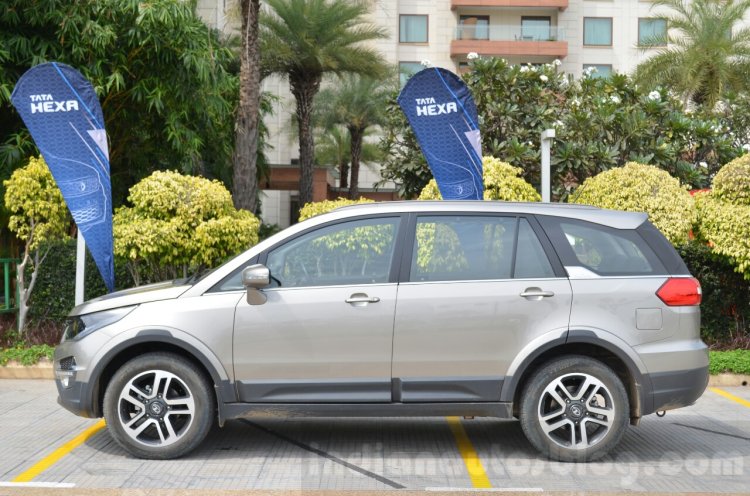
We took the Hexa MT mildly off-road, and it performs as expected. At no point did medium-large rocks pose a threat to the underbelly of the Hexa, or even the front/rear bumpers. That being said, the Hexa's bulk (the ladder-frame chassis translates to a 2,000+ kg weight) does prove to be a bit of hindrance off-road. The Hill-Descend Control however worked like a charm, and also allows the driver to increase the speed using the cruise control switches.
Ride and Handling:
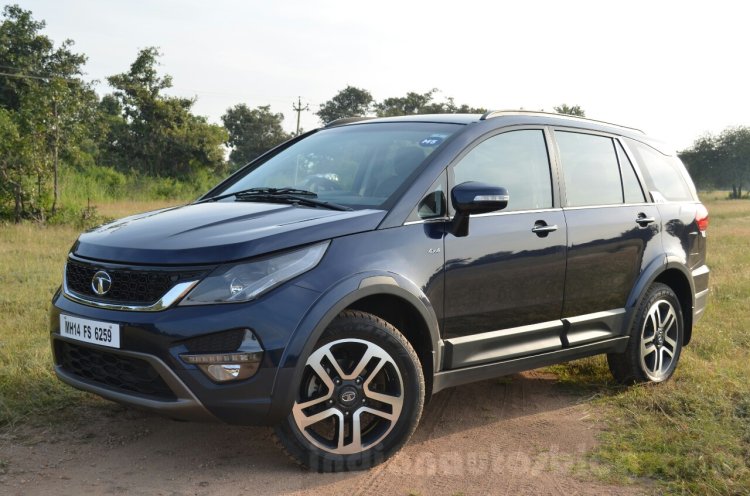
The Tata Hexa uses a double wishbone type with coil springs up front and a coil spring 5-link rigid axle suspension at the rear. It gets anti-roll bars at the front and rear though. What this translates into is near-impeccable ride quality across any terrain. A pothole needs to be very large and very deep, for it to upset the occupants of the Hexa. The ride quality is especially good at slow-speeds, where we found the Hexa to glide over rough-road pathways. Compared to the XUV500, the Hexa definitely offers better ride quality, no doubt about that.
Tata Motors say that the Hexa's platform (based on the Aria's underpinnings) has been made stiffer, and that the steering geometries are newly calibrated. This has led to a positive impact on the road, where the Hexa possesses impressive road-holding capabilities for its size and bulk. Body roll is still present, but it is very much controlled when you compare the Hexa to the XUV500.
Brakes and Safety:

The Hexa gets disc brakes at the front (298 mm) and rear (206 mm), ABS, EBD, ESP, Cornering Stability Control, Traction Control system and 6 airbags. We thought the brakes could do with a bit more bite, but overall, the braking performance is satisfactory.
Fuel Efficiency:
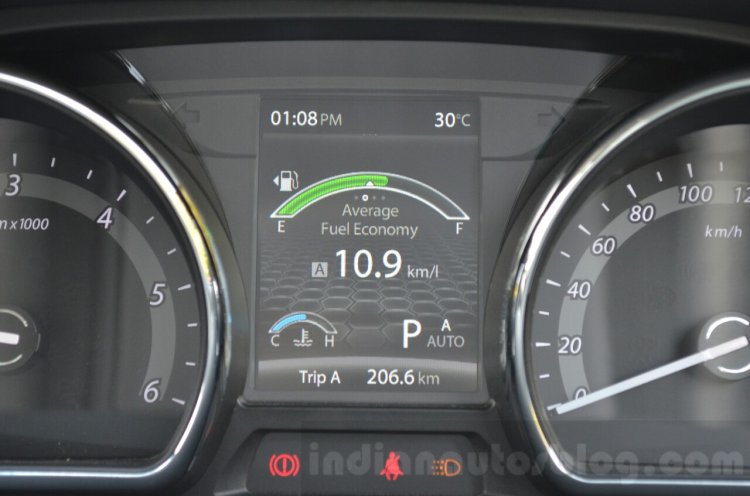
Tata Motors will not disclose the fuel efficiency of the Hexa until a later date. On our drive, the Hexa MT 4x4 averaged around 12.4 km/l with around 85% of highway driving, whereas the Hexa AT 4x2 returned around 11 km/l in similar conditions.
Prices:
The Hexa's price announcement is expected sometime in January 2017. We think INR 16.5-17 lakhs for the top-end Hexa 4x4 MT and about the same for the XTA Hexa 4x2 AT will make it good value for money.
Verdict:
It has been over 18 months since Tata showcased the concept Hexa, and some might say it is long overdue, considering the platform as such is not all new. The target audience of a Hexa is one that is already looking at the Mahindra XUV500 or the Toyota Innova Crysta. Sources say that the pricing of the Hexa will also push certain Duster/Creta buyers into Tata showrooms.
The Hexa MT, we though, is a capable product but lacks finesse. You get the feeling that Tata Motors could have polished off some rough edges with its ergonomics or drive characteristics. However, for buyers looking to be chauffeur driven, it offers a compelling package if priced right.
The Hexa AT on the other hand comes across as highly recommended. A quick drive of this variant will tell you that it feels premium, powerful and indeed better than its main rival (Mahindra XUV500 AT). We think the Hexa AT, if priced right, will offer great value-for-money compared to the Innova Crysta which costs nearly INR 25 lakhs for the top-end variant (on-road Delhi).
Bookings for the Hexa start on November 1, and deliveries commence in January 2017. Customer cars will be manufactured in 2017, Tata Motors confirmed.
